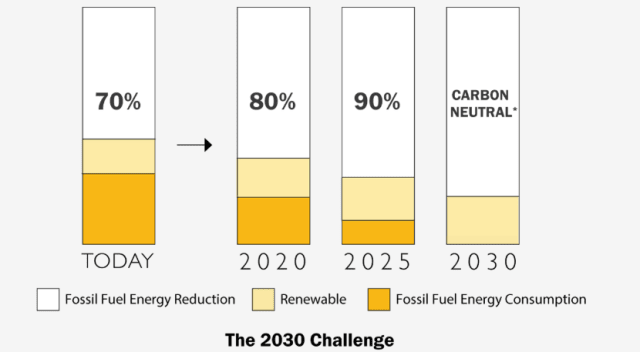This June, Architecture 2030 released its new Zero Code, a building energy standard for new building construction. (Image courtesy of Architecture 2030.)
Buildings are responsible for almost half of all greenhouse gas emissions, a sobering fact for those in the construction and architecture industry. Over 15years ago, one architect broke with the profession to do something about it.
Edward Mazria closed his architecture practice in 2002 to establish Architecture 2030, a not-for-profit aimed at reducing carbon emissions from buildings. Since then, the organization has grown into a force for good on the national and international stages.
Architecture 2030 has been busy this year, and we sat down with representatives from the organization to talk about its tools, initiatives, and goals for the future.
The Zero Code
Architecture 2030’s most recent achievement is releasing the ZERO Code, a building energy standard for new building construction that includes both energy efficiency standards and renewable energy sources to create buildings that release net-zero carbon. Released in June 2018, the ZERO Code includes potential paths for efficiency compliance, as well as an energy calculator that makes it easier to crunch the numbers.

A graphic demonstrating the2030 Challenge. (Image courtesy of Architecture 2030.)
According to Architecture 2030, part of the ZERO Code’s strength is that it builds on existing standards to make it easier for architects to…

